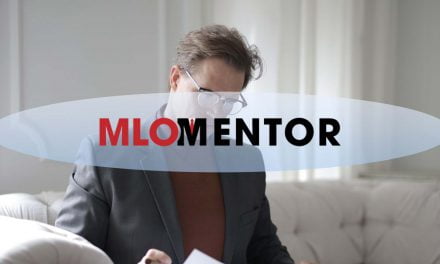MLO Mentor is an ongoing series covering compliance best practices for mortgage loan originators (MLOs). This article discusses which loans fall under the Section 35 higher-priced mortgage loan guidelines.
Section 35 designation
In 2008, HOEPA was amended to add a separate disclosure requirement for higher-priced mortgage loans (HPMLs), also known as Section 35 loans. Regulations required by the Dodd-Frank Wall Street Reform and Consumer Protection Act (Dodd-Frank Act) widened the classification of all HOEPA loans, providing more stringent lending requirements for Section 32 and Section 35 loans.
While a Section 32 high-cost loan and a Section 35 higher-priced mortgage loan have similar guidelines for designation and use, they are not interchangeable and have different lending restrictions and disclosure requirements.
Like most other consumer credit transactions secured by a dwelling, a lender who makes a Section 35 higher-priced mortgage loan needs to consider the borrower’s ability to repay the mortgage. [12 CFR §1026.34(a)(4)]

A Section 35 loan is defined as a closed-end loan secured by a one-to-four unit owner-occupied residential property or personal property used as a principal residence, called a dwelling, with an annual percentage rate (APR) which exceeds the average prime offer rate (APOR) for a comparable transaction by more than:
- 5% for loans secured by a first lien on adwelling with a loan amount conforming to Freddie Mac’s loan limit (i.e., conforming loans);
- 5% for loans secured by a first lien on a dwelling with a loan amount exceeding Freddie Mac’s conforming loan limit (i.e., jumbo loans); and
- 5% for loans secured by a subordinate lien on a dwelling. [12 CFR §1026.35(a)(1)]
Impound account required
Lenders that make Section 35 higher-priced mortgages are required to establish an impound account for the homeowner before closing the loan. The impound account allows the homeowner to deposit property taxes, insurance premiums and any other periodic payment associated with the property or loan. [12 CFR §1026.35(b)(1)]
Impound accounts may be canceled upon the earlier of:
- the termination of the debt, e.g., repayment, refinancing, rescission or foreclosure; or
- the borrower’s request, no sooner than five years after consummation of the loan. [12 CFR §1026.35(b)(3)(i)]
However, a mandatory Section 35 impound account may not be cancelled while:
- the loan is delinquent; or
- the loan-to-value ratio (LTV), based on the original value of the property at the time the loan was closed, is 80% or higher. [12 CFR §1026.35(b)(3)(ii)]
Impound accounts do not need to be established for higher-priced mortgage loans which:
- are secured by shares in a cooperative;
- finance the initial construction of a dwelling;
- are temporary bridge loans with a loan term of 12 months or less; or
- are reverse mortgages. [12 CFR §1026.35(b)(2)(i)]
Impound accounts are also not required when the lender is designated a small lender. A lender qualifies as a small lender when:
- during the previous year (two years for mortgage applications received before April 1), the lender extended at least one covered transaction secured by a first lien on a property in a rural or underserved area;
- during the preceding year (two years for mortgage applications received before April 1), the lender and its affiliates originated 2,000 or fewer covered transactions secured by a first lien that were sold or committed to be sold at consummation;
- as of the end of the preceding calendar year (the end of two years for mortgage applications received before April 1), the lender had assets of less than the statutory threshold (in 2021, the threshold is $2.230 billion); and
- the lender and its affiliates do not maintain impound accounts established on higher-priced mortgage loans (Section 35 mortgages) except:
- for Section 35 mortgage applications received between April 1, 2010 and June 17, 2021; or
- for escrow accounts established to help distressed borrowers avoid default and foreclosure. [12 CFR §1026.43(e)(5)(i)(D); 12 CFR §1026.35(b)(2)(iii)]
Properties subject to membership in a homeowner’s association (HOA) which is obligated to provide a master insurance policy do not require the deposit of these insurance premiums into the escrow account. [12 CFR §1026.35(b)(2)(ii)]
The lender needs to pay the borrower interest in accordance with applicable state or federal law for any amount held in the impound account.
Any lender who establishes an impound account under this law needs to disclose the following information to the borrower at least three business days before closing of the loan:
- the fact that an impound account will be established upon closing of the loan;
- the amount required as a deposit at closing to fund the impound account;
- the amount, in the first year after the closing of the loan, of the estimated taxes and insurance premiums to be deposited in the impound account;
- the estimated monthly amount payable to the impound account; and
- if the borrower chooses to terminate the impound account, the borrower will be responsible for making all payments on taxes and insurance premiums. [15 USC §1639d(h)]
Note that lenders may not subvert the rules for a Section 35 loan by structuring a closed-end credit transaction as an open-end credit transaction. [12 CFR §1026.35(d)]
In next week’s MLO Mentor, we’ll delve into the appraisal rules that apply to Section 35 loans.














